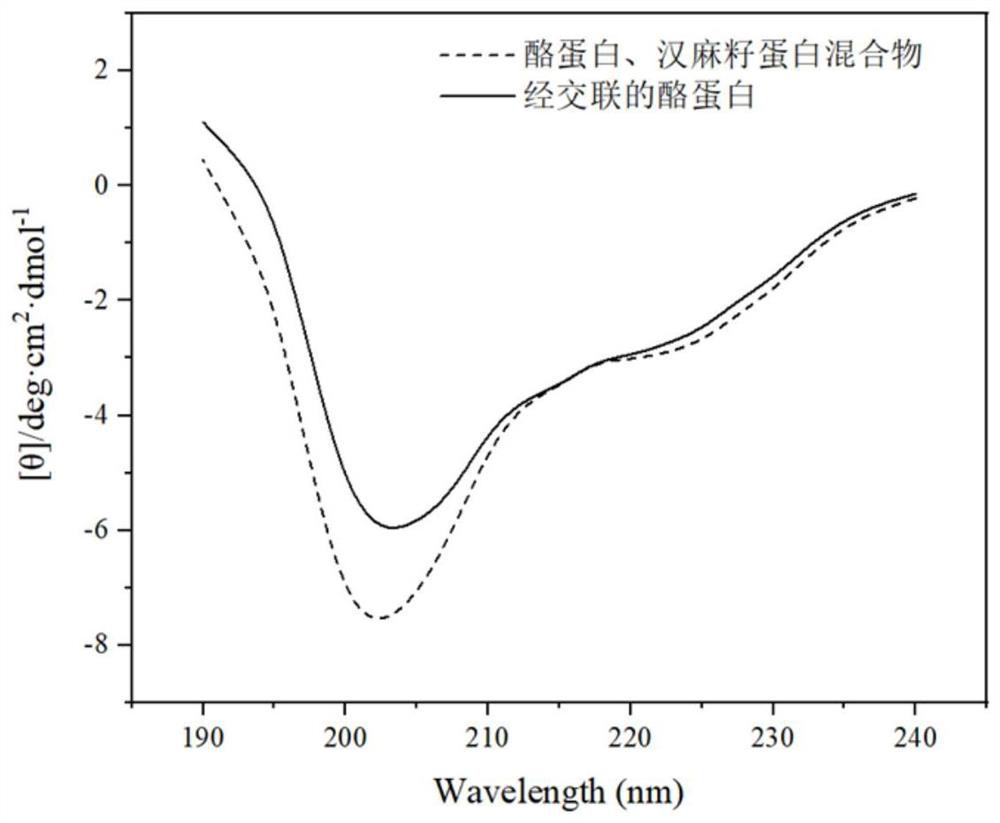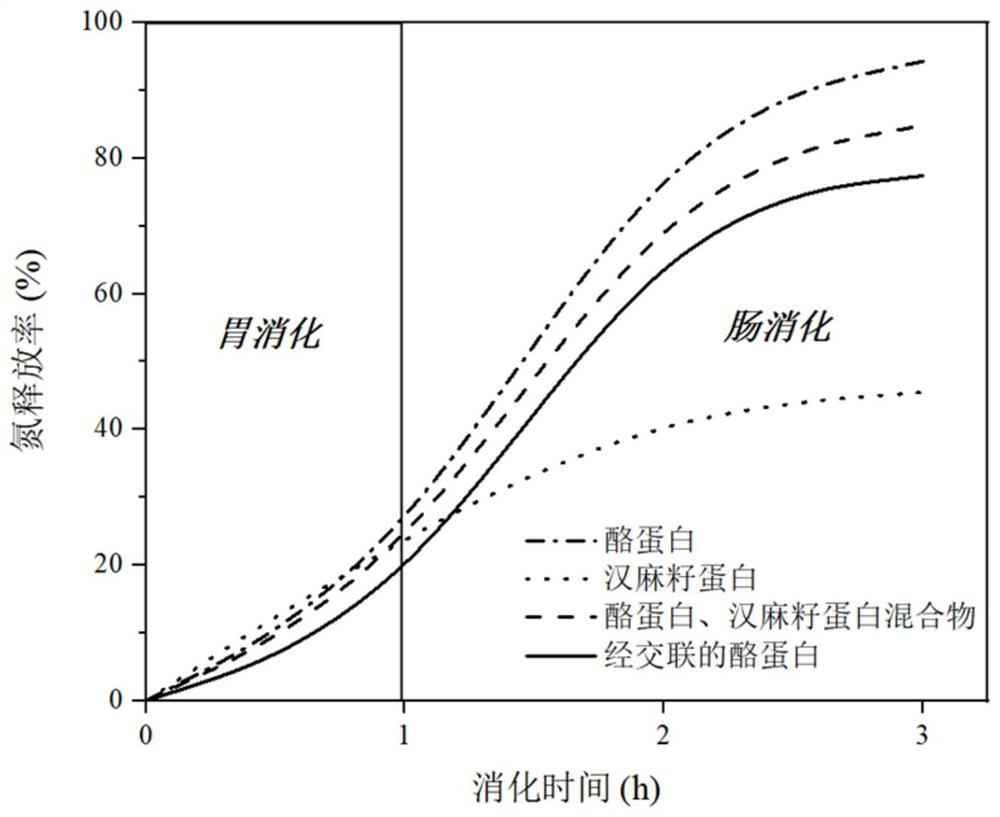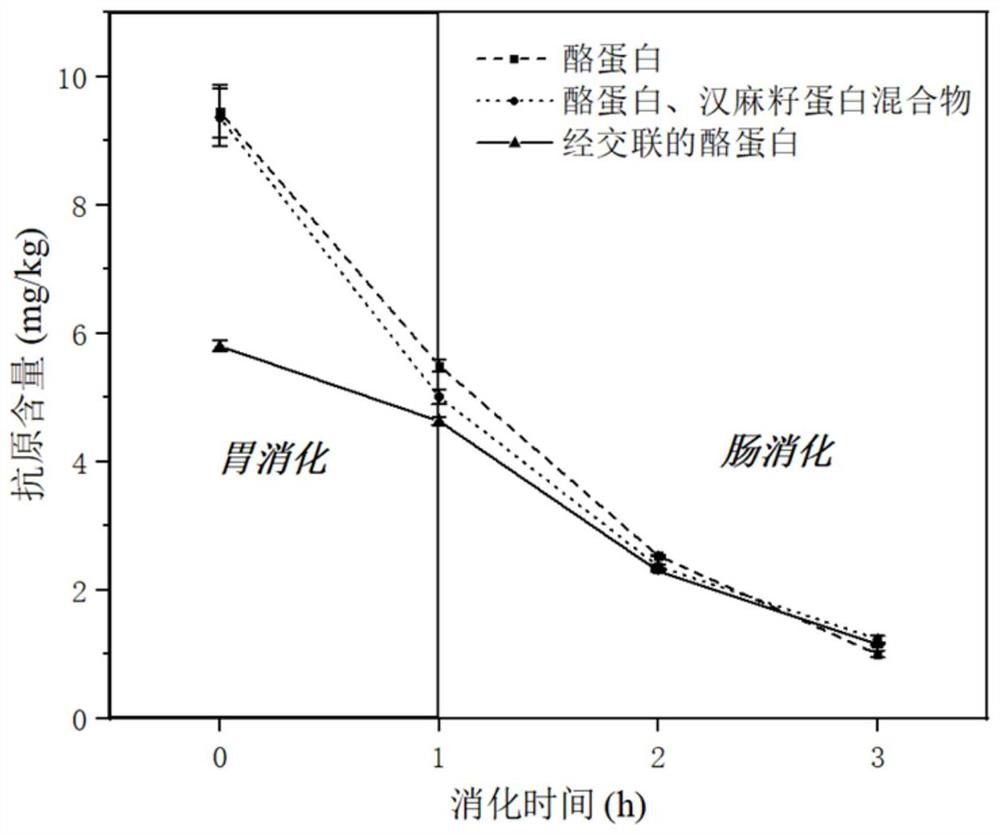Method for improving enzymolysis resistance of casein and reducing sensitization
A casein and enzymolysis-resistant technology, applied in the field of milk production, can solve problems such as high energy consumption, complicated operation, and food safety of products, and achieve the effects of low energy consumption, simple process steps, and easy operation
- Summary
- Abstract
- Description
- Claims
- Application Information
AI Technical Summary
Problems solved by technology
Method used
Image
Examples
Embodiment 1
[0047] The hemp seed protein was prepared by alkali-dissolving and acid-precipitating method. Add n-hexane (1:3, w / v) to the pulverized hemp seeds for degreasing, stir for 3 h, and repeat this process three times. Then air-dry in a fume hood for 24 h at room temperature. The degreased hemp seed powder was dispersed in deionized water (1:10, w / v), adjusted to pH 11 with 6M NaOH, and continuously stirred at 25 °C for 3 h. The mixture was centrifuged at 6000 × g for 10 min, and the pH of the supernatant was adjusted to 4.5 using 6M HCl and left at 4 °C overnight to precipitate the protein. The precipitate was separated by centrifugation at 6000×g for 10 min, then dispersed in distilled water and adjusted to pH 7.0. The mixture was then lyophilized and stored at 4°C until use.
[0048] Casein and hempseed protein solutions with a concentration of 6% (w / v) were prepared respectively, mixed at a mass ratio of 7:1, and stirred with a magnetic stirrer at room temperature for 30 min...
Embodiment 2
[0062] Extraction of hemp seed protein: Hemp seed protein is prepared by alkali-dissolving and acid-precipitating method. Firstly, n-hexane (1:2.5, w / v) was added to the pulverized hemp seeds for degreasing, stirred for 2 hours, and the process was repeated three times. Then air-dry in a fume hood for 22 h at room temperature. The degreased hemp seed powder was dispersed in deionized water (1:9, w / v), adjusted to pH 12 with 6M NaOH, and continuously stirred at 25 °C for 2 h. The mixture was centrifuged at 6000 x g for 15 min, and the pH of the supernatant was adjusted to 4.5 using 6M HCl and left overnight at 3 °C to precipitate the protein. The precipitate was separated by centrifugation at 6000×g for 15 min, then dispersed in distilled water and adjusted to pH 7.0. The mixture was then lyophilized and stored at 3°C until use.
[0063] Preparation of mixed solution of casein and hempseed protein: first prepare casein and hempseed protein solutions with a concentration of...
Embodiment 3
[0067]Extraction of hemp seed protein: Hemp seed protein is prepared by alkali-dissolving and acid-precipitating method. Firstly, n-hexane (1:3.5, w / v) was added to the pulverized hemp seeds for degreasing, stirred for 2.5 h, and the process was repeated three times. Then air-dry in a fume hood for 23 h at room temperature. The degreased hemp seed powder was dispersed in deionized water (1:11, w / v), the pH was adjusted to 11.5 with 6M NaOH, and the stirring was continued at 25 °C for 2.5 h. The mixture was centrifuged at 6000 x g for 12 min, and the pH of the supernatant was adjusted to 4.5 using 6M HCl and left at 5 °C overnight to precipitate the protein. The precipitate was separated by centrifugation at 6000×g for 12 min, then dispersed in distilled water and adjusted to pH 7.0. The mixture was then lyophilized and stored at 5°C until use.
[0068] Preparation of mixed solution of casein and hempseed protein: first prepare casein and hempseed protein solutions with a co...
PUM
| Property | Measurement | Unit |
|---|---|---|
| molecular weight | aaaaa | aaaaa |
Abstract
Description
Claims
Application Information
 Login to View More
Login to View More - R&D
- Intellectual Property
- Life Sciences
- Materials
- Tech Scout
- Unparalleled Data Quality
- Higher Quality Content
- 60% Fewer Hallucinations
Browse by: Latest US Patents, China's latest patents, Technical Efficacy Thesaurus, Application Domain, Technology Topic, Popular Technical Reports.
© 2025 PatSnap. All rights reserved.Legal|Privacy policy|Modern Slavery Act Transparency Statement|Sitemap|About US| Contact US: help@patsnap.com



